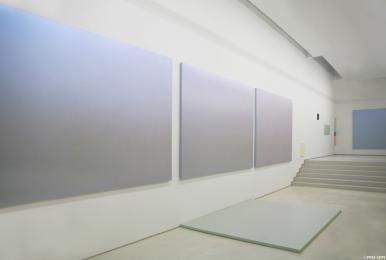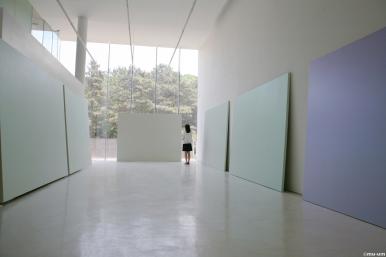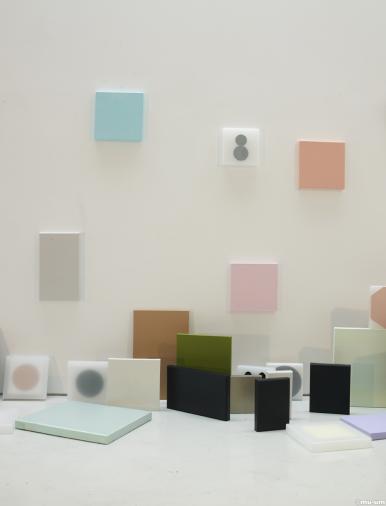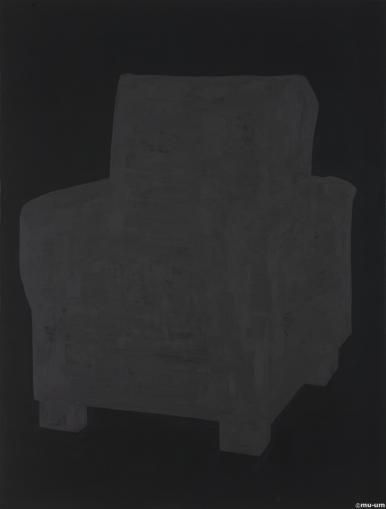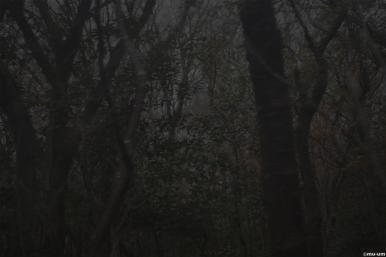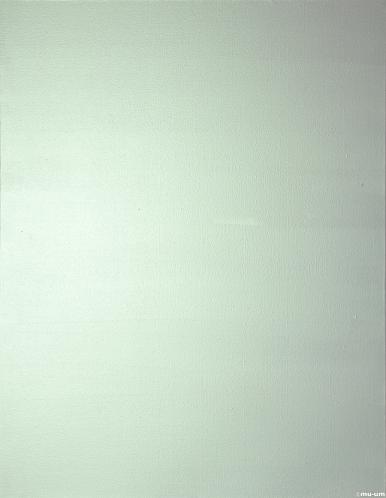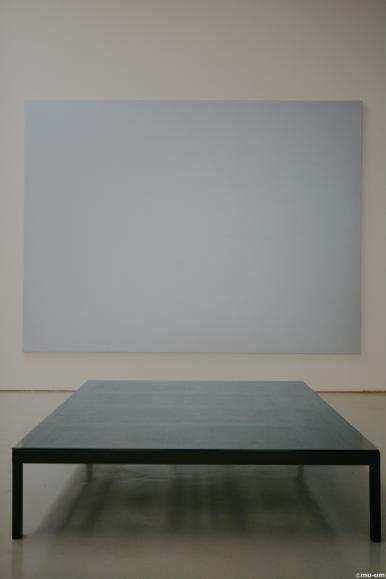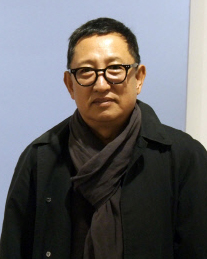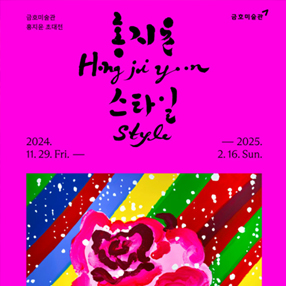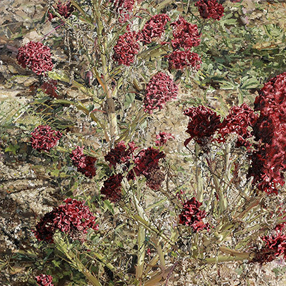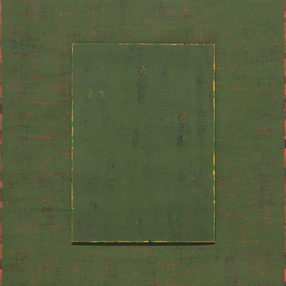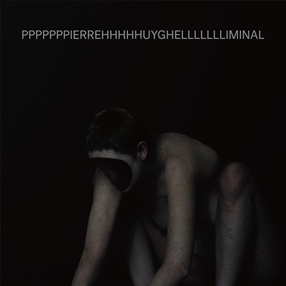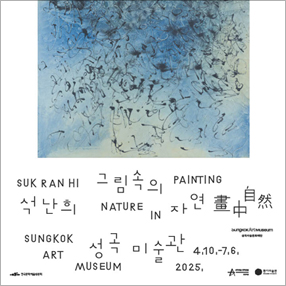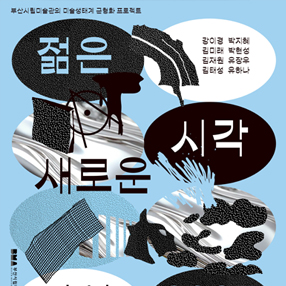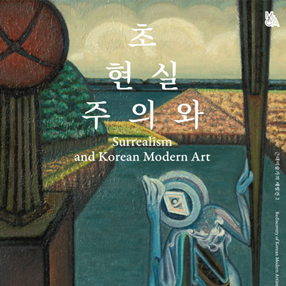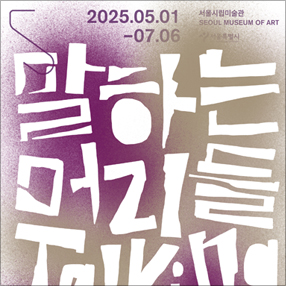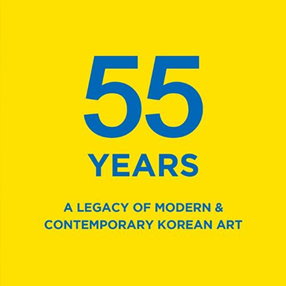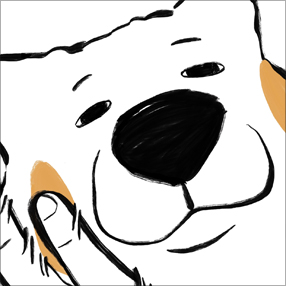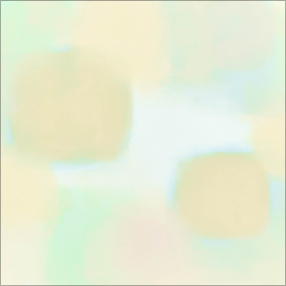본문
-
김태호
installation view 2012
김태호
installation view 2012
김태호
installation view 2012
김태호
D12-02 acrylic on canvas, 145.5x112cm, 2012
김태호
landscape drawing pigment print, 80x120cm, 2012
김태호
landscape_G acrylic on canvas, 291x218cm, 2012
Press Release
스케이프 드로잉 Scape Drawing : 그리기와 그리지 않기 혹은 구체추상
금호미술관과 학고재에서 열리는 김태호 교수의 개인전 작업들에 '스케이프 드로잉Scape Drawing' 혹은 '구체추상'이라는 제목을 붙였다. 처음에는 '마인드스케이프Mindscape' 또는 '랜드스케이프Landscape'로 하려고 했는데, 이 단어들은 이미 너무 흔하게 사용되어 조금은 모호한 조어造語의 새로움으로 긴장감을 주고자 'mind'와 'land'를 빼고 대신 'drawing'을 합성어처럼 붙였다. 작가의 작업 전체를 드로잉의 확장된 개념으로 풀어보자는 필자의 의도다. 한편 '구체추상'은 윤동천 교수의 아이디어다. 작가의 개인적인 정서(예를 들어 '모호함'같은)를 구체적으로 드러내려는 추상 작업이라는 뜻에서 사용했는데, 문학의 '구체시具體詩'와 동등한 의미로 '구체추상具體抽象'이라 명명했다.
구체추상 Concrete Abstraction
'구체시'는 언어에 의해서 표출, 형상되는 음성의 청각성과 문자의 시각성을 중요시하는 '기호시記號詩' 같은 것이다. 이 때문에 기존의 의미•문맥•비유 같은 문법적•수사적修辭的 요소로 형성되는 언어의 논리성을 완전히 파괴하는 데 그 의미를 둔다. 여기서 말하는 '구체具體'는 소재素材를 소재 자체에 내재하는 자율적인 법칙성, 질료적質料的인 기능으로 다루는 것을 가리킨다. 김태호의 '구체추상'은 드로잉에 의해서 표출, 형상되는 시지각의 청각성과 이미지의 시각성을 중요시하는 '기호추상記號抽象' 같은 것이다. 기호화된 그의 추상 혹은 구상 이미지들은 기존의 의미•문맥•비유 같은 은유적, 상징적 요소로 형성되는 추상의 논리성을 거부한다. 또한 그의 추상이 '구체적'이라 함은 'concrete'의 의미로 좀 더 확실한 물리적 실체, 또는 물질성을 지향하고 있다는 측면에서 오히려 '상상적imaginary'이지 않거나 '추상적abstract'이지 않다. 이것은 마치 쿠르베Coubert가 상상의 이미지를 거부하고 무언가 구체적인concrete 대상의 물질성을 재현해내려는 태도와 같다. 김태호는 자신의 정신적인 느낌과 태도를 더욱 구체적으로 드러내는 방법으로 물질적인 추상, 즉 소재 자체에 내재하는 자율성의 법칙과 질료성을 보여줌으로써 '구체적'이라 할 수 있다.
예를 들어보자. 작가의 작품 중에 설치적 요소가 가미된 「모호함」이란 작품이 있다. 주제와 제목 자체가 이미 추상적인 어떤 상황을 지향한다. 이 상황에 대한 더욱 구체적인 정서의 재현을 위해 작가는 물질에 의존한다. 이미지가 배제된 박스 형태의 구조물들이 갤러리 바닥에 놓여 있고, 한쪽 벽에는 은은한 모노톤의 대형 캔버스가 걸려 있다. 그 캔버스의 외양은 단색조로 보이지만 실제로는 몇 겹의 물감층을 쌓아올려 두터운 물질의 입체감과 무게감을 가질 정도로 질료적이다. 또한 여러 차례 쌓아올리는 과정에서 파생하는 소재 자체의 내재율, 즉 모호함의 은은한 느낌이(마치 오후 5시와 6시 사이의 풍경 같은) 있는 듯 없는 듯한 시각적 불편함이 오히려 긴장감을 유발한다. 기존의 추상 법칙에 따른 의미, 문맥, 비유를 상실한 채 관람객은 좀 더 구체적인 상황에서 '모호함'의 아우라를 느낌과 정서로 희미하게나마 맛볼 뿐이다. 왜냐하면 모호하니까. 그러나 관람객은 물질들이 그 내재율의 고요, 은은함, 불투명 등의 청각적, 시각적 울림들을 품고 있는 듯한 묘한 분위기에 젖을 수 있다.
스케이프 드로잉 Scape Drawing
같은 맥락에서 이 「모호함」은 때에 따라 '기호화'된 이미지들과 조합된다. 문학이 시청각의 느낌을 빌려 새로운 융합의 구체시를 만들었다면, 김태호는 그 반대다. 즉, 시지각으로 문학성을 품는다. 그의 작품은 드로잉 이미지가 언어의 느낌을 빌려 새로운 융합의 회화를 시도했다고 볼 수 있다. 여기서 말하는 '드로잉'이란 이미지를 생산하는 기존의 방법과 과정만을 의미하지 않는다. 앞서 언급한 「모호함」처럼 김태호는 '아우라'를 드로잉한다. 그리는 것만 드로잉이 아니라 그린 것을 지우는 것도, 더 나아가 이미지 없이 캔버스의 물감층을 몇 겹씩 쌓아올리는 행위 역시 드로잉이라는 것이 드로잉에 관한 필자의 확장된 개념이다.
김태호는 상황을 드로잉한다. 이 때문에 과정과 결과의 이분법이 없다. 느낌의 맥락에서 작가의 드로잉 결과물이 관람객의 과정일 수 있으며, 작가 스스로도 자신이 제작한 드로잉 결과물의 과정일 수 있다. 필자가 말하는 '스케이프 드로잉Scape Drawing'이란 이런 개념이다. 김태호와 상황은 다르지만 비슷한 사례가 있다. 좀 더 저돌적이고 개념적이지만 흥미롭다. 라우션버그Rauschenberg가 아직 유명하지 않았던 젊은 시절, 그는 드쿠닝De Kooning을 찾아가 억지를 써서 드로잉 한 점을 선물 받았다. 드쿠닝은 썩 마음에 들지는 않았지만, 대가답게 라우션버그가 자신의 드로잉을 지울 것을 알면서도 한 점을 내주었다. 라우션버그는 여러 개의 지우개를 사용해 드쿠닝이 그린 이미지들을 지우고 마치 모노톤의 회화처럼 만들었다. 이것을 전시한 작품이 라우션버그의 「Erased de Kooning」이다. 이미지를 지운 라우션버그의 행위 역시 드로잉으로 보자는 것이 필자의 견해다.
드로잉이란 매우 정신적인 행위다. 이 때문에 라우션버그의 '지우기'도 대가의 이미지를 훼손했다기보다 드쿠닝으로 상징된 당시 현대미술의 상황과 정서를 지움의 행위로 표출한 '스케이프 드로잉'이라고 할 수 있다. 무엇을 '그린다to draw'는 것은 이미 그 안에 '자유'와 '추상' 같은 정신적인 가치들이 내재되어 있는 것이다. 무엇을 그린다는 행위는 그 무엇과의 '유사함'을 잡아내는 것으로, 그 '잡아냄'의 과정에는 '지각知覺'과 '개념槪念'을 '끄집어내는' 것을 스스로 내포하고 있다. 그러므로 그린다는 행위는 대상의 '본질'과 '핵심'을 형식에 담겠다는 의지를 포함한다. 따라서 드로잉은 무언가 활동적인 상태의 행위나, 그 행위의 결과보다 훨씬 더 많은 '활성도'를 포함하고 있다. 그것은 현존의 유사성을 만들어나가는 표면과 공간에서의 기술적 행위일 뿐만 아니라, 무언가 현존의 상태를 대체하거나 복구하려는 '사회적 공간'의 활동(적어도 관찰자를 위한)이기도 하다. 이 때문에 드로잉은 '소통'을 위한 '유비쿼터스ubiquitous'의 가장 현대적인 시스템일 수 있다. 돌이켜 생각하면, 재현과 추상의 드로잉에 관한 모더니즘의 역사와 개념을 소극적으로 이해하면서 그 둘 간의 갈등이 유독 심했던 곳이 한국 미술계였다. 심지어는 '추상'이 권력화되어 지금까지도 보이지 않는 정치력을 행사하고 있는 게 또한 우리 미술계의 실정이다. 필자는 그 대열에 작가 김태호를 포함시키지 않는다. 왜냐하면 다르기 때문에. 추상이라고 다 같은 추상이 아니듯이 모노의 느낌이 있다고 모두 단색화는 아니다. 확장된 개념으로서 드로잉이 추상의 새로운 가능성을 모색하는 중요한 계기가 될 것으로 확신하며 김태호의 추상을 다시 생각한다. ■ 정영목
Scape Drawing : To Draw and Not To Draw or Concrete Abstraction
For the title of Professor Kim, Taiho's solo exhibition at Kumho Art Museum and Hakgojae Gallery, "scape drawing" or "concrete abstraction" is chosen. At first, the terms like "mindscape" or "landscape" came up on the table, but there was a concern that those terms are already used in common for too many times before. To give some tension, I came up with an ambiguous new term by dropping "mind" and "land" from the two terms, and putting it with "drawing" instead: "scape drawing". The intention is to view the artist's whole work in an extended concept of drawing. "Concrete abstraction" is also a new term that means the abstract work which concretely brings out the artist's personal sentiment such as "ambiguity". I find the reasoning of this new term from "concrete poetry" in literature for having an equivalent meaning.
Concrete Abstraction
"Concrete poetry" is like a "sign poetry" which signifies the visuality of letters and the auditory of voices, formed and expressed through languages. Thus, it has its meaning in utterly destroying the logic of a language formed with grammatical and rhetorical elements like the existing meaning, context, and figurative speech. The "concreteness" is a term that indicates handling the subject based on the rules of autonomy and the materialistic functions inherent in the subject itself. Kim, Taiho "concrete abstraction" is like a "sign abstraction" which signifies the visuality of images and the auditory of visual perception, formed and expressed through drawings. His abstract images or representational images reject the reasoning of abstraction formed with symbolic elements such as existing meaning, context, and figurative speech. Also when saying his abstraction is "concrete" means that it is rather not "imaginary" or "abstract" for aiming more certain, physical substance or materiality. It is like Courbet's attitude of rejecting imaginary images and trying to represent the materiality of somewhat concrete subject. Kim, Taiho could be called "concrete" for showing the materialistic abstraction as a way of more concretely exposing his spiritual feeling and attitude—hat is by showing the rules of autonomy and the materiality inherent within the subject.
Let's take an example. There is a work of the artist called 「Ambiguity」 that has some installation element to it. The whole title and the subject aim for somewhat already abstract situations. For the representation of more concrete sentiment of such situation, the artist relies on materials. Box-shaped structures with no images are laid on the gallery floor, and on one side of a wall a large canvas with delicate monotone is hung. The appearance of the canvas seems monochrome, but in real, it is a thick material made up of layers of paints that even has a sense of volume and weight to it. It is uncertain if the material's own rhythm that derives from the process of layering the paints, in other words, the delicate sense of ambiguity– somewhat like the scenery between 5 pm and 6 pm—s there or not. And this visual discomfort from the ambiguity of uncertain feel raises the tension. In the absence of the meaning, context, figurative speech by the existing abstraction rules, the viewers through more concrete situation, only take a quick sip on the aura of "ambiguity", just enough to feel the ambience of it because it's ambiguous. However, the viewers can feel the ambience where materials embrace the auditory and visual resonances like the serenity, delicacy, opacity of the rhythms.
Scape Drawing In the same context, this 「Ambiguity」 is combined with "sign" images. If literature created the new fusion of concrete poetry from audio-visual, Kim, Taiho is the opposite. In other words, he creates literary from visual perception. His work could be seen as an attempt to create a new painting of fusion by taking a sense of language into the image of drawing. The "drawing" I speak here doesn't only mean the conventional process of creating images. Like the 「Ambiguity」 mentioned above, Kim, Taiho draws the "aura". Not only is drawing, but also is erasing the drawing and furthermore layering colors on a canvas without any image are all considered to be a part of my extended concept of drawing. Kim, Taiho draws situations. And because of that, there is no dichotomy between process and result. Depending on the context of feeling, a result of the artist's drawing could be a process of a reader, or the result of the artist's own drawing could also be a process to the artist. This is the concept of the "Scape Drawing". It is a little distant from Taiho Kim's situation, but there is a more suitable case. It's more reckless and conceptual, yet interesting. When Rauschenberg was young and not quite famous, he made a visit to De Kooning, and insisted on giving one of De Kooning work of drawing to him. With knowing that Rauschenberg will erase his drawing, De Kooning was not pleased. But as worthy of a master, he gave his drawing to Rauschenberg. With using many erasers Rauschenberg turned De Kooning's images on the drawing into a somewhat monotone painting. This is Rauschenberg's 「Erased De Kooning」. Seeing Rauschenberg's action of erasing the images as a drawing coincide with my view on the concept of drawing.
Drawing is a very spiritual action. Therefore, Rauschenberg's "erasing" is more like a "Scape Drawing" through the action of erasing to express the contemporary art scene and sentiment symbolized by De Kooning, than destroying the master's image. The spirits like "liberty" and "abstraction" are implicit in "drawing" something. " To draw" something is to "catch" the "resemblance" to that something. And the process of this "catch" is an action that involves "pulling out" "perception" and "concept". Therefore, "drawing" is an action that includes the will to take a subject's "nature" and "core" in a form. So drawing includes the action as in some active status or the more "activeness" than the result of that particular action. It is not only a technical action in the surface and space which makes existing resemblance, but also an activity —at least, for observers —in "social space" that tries to replace or restore the existing status. In that sense, drawing could be the most contemporary system of "ubiquitous" for "communicating". To look back, the Korean art world was a place where the history and the concept of modernism about the representational and abstract drawings were passively understood, and at the same time a dissension between the two was particularly harsh. Even more, "abstraction" being some kind of authority and exercising invisible political power are the current state of our art scene. I do not wish to include the artist Kim, Taiho in that line of power, because he is different. Just as not all abstract paintings could be put into one category of abstract paintings, the paintings with monotone are not all monochrome paintings. With the assured confidence that drawing as an extended concept is an important opportunity to seek a new possibility in abstraction, it provides a chance to rethink Kim, Taiho's abstraction. ■ Chung, Young mok전시제목김태호 - scape drawing
전시기간2012.05.11(금) - 2012.06.03(일)
참여작가 김태호
초대일시2012년 05월 11일 금요일 05:00pm
관람시간10:00am - 06:00pm
휴관일월요일
장르회화와 조각
관람료성인: 2,000원
학생: 1,000원(대학생 포함)장소금호미술관 Kumho Museum (서울 종로구 삼청로 18 )
연락처02-720-5114
Artists in This Show
1954년 원주출생
금호미술관(Kumho Museum) Shows on Mu:um
Current Shows




